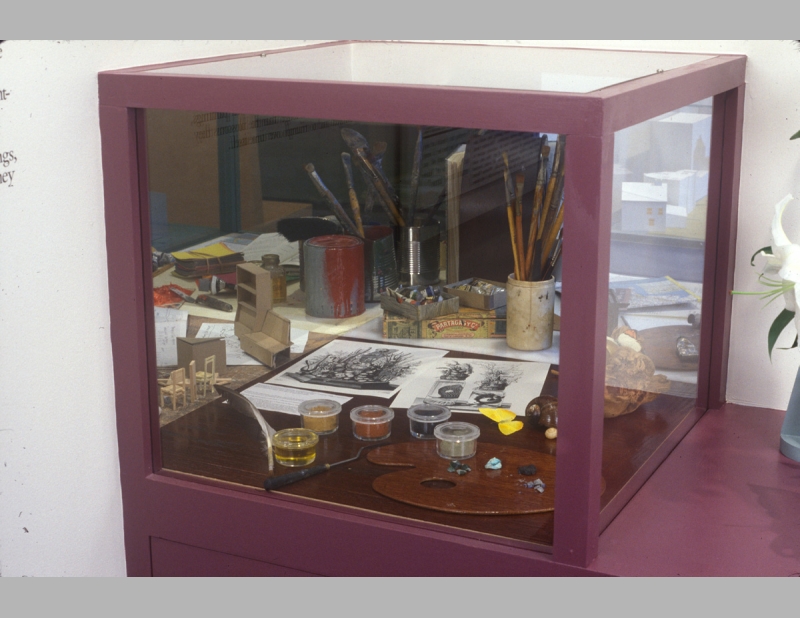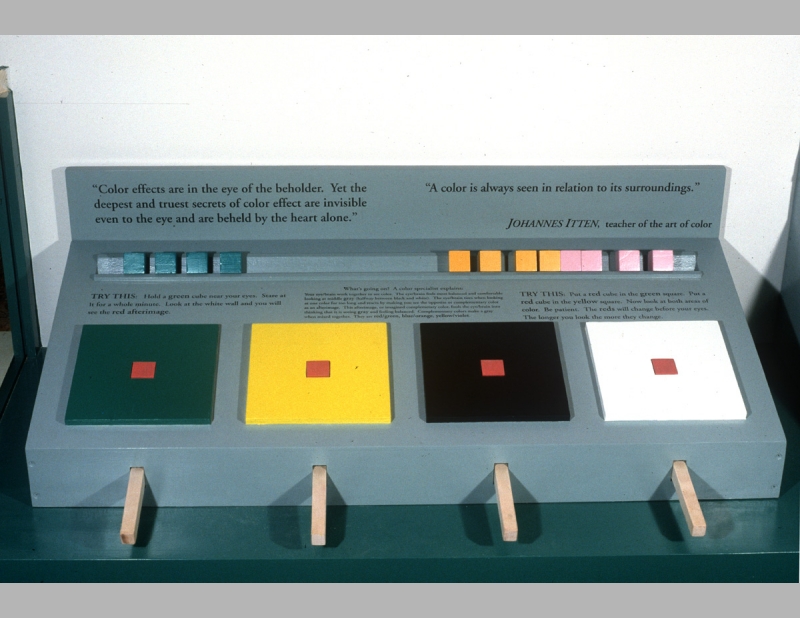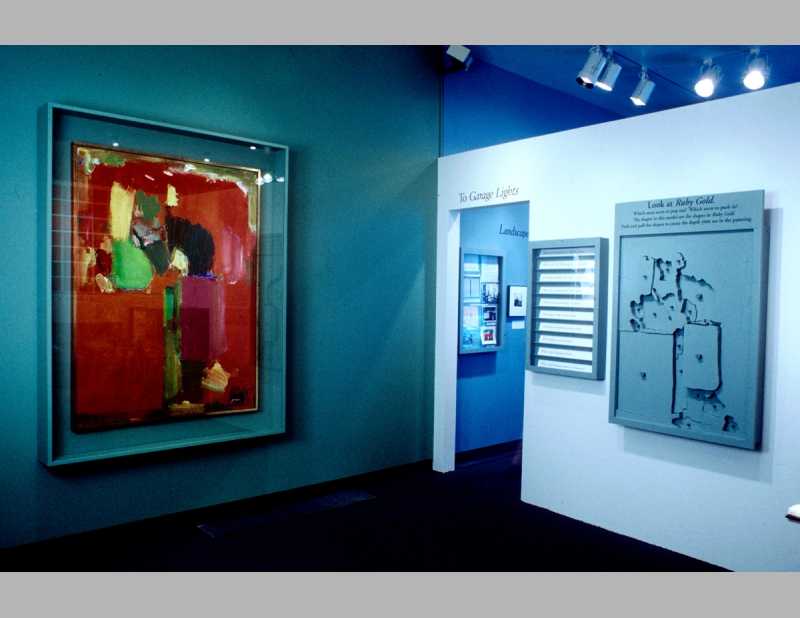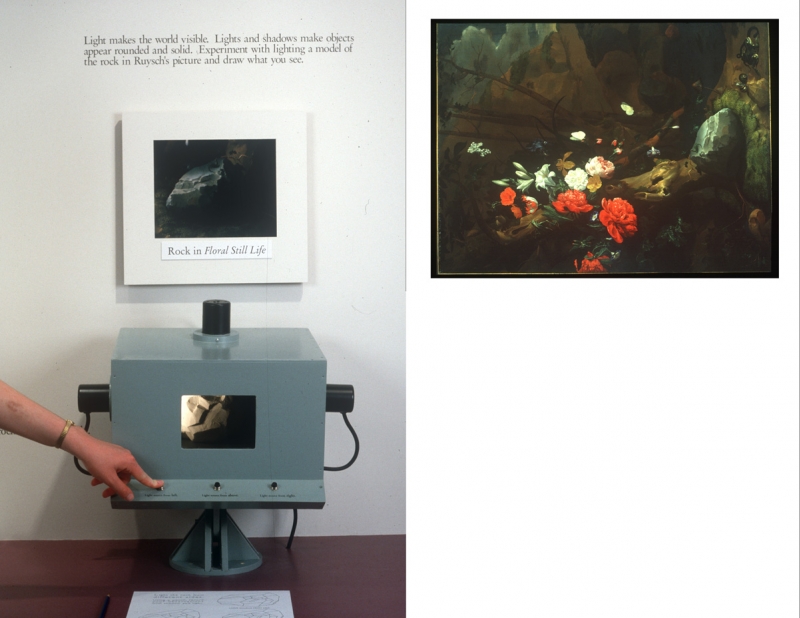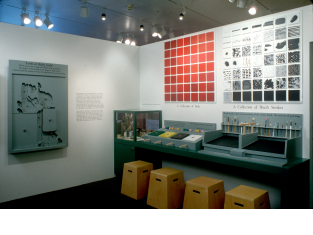Looking Laboratory 1996
The Looking Laboratory was intended as the starting place for a museum visit, an interactive experience to prime visitors to think about looking as a process, enriched with new tools to consider other works in the museum's collection.
What moves a painter to paint? What are his or her passions and techniques? Why does it matter what time in history an artwork was created? Are some paintings more "real " than others?
Three painting from the collection were selected to use in the Looking Laboratory:
A meticulously rendered 17th century Dutch flower painting by Rachel Ruysch.
An abstracted landscape by Stuart Davies from the early 1930’s,
A Hans Hofmann 1959 painting.
The installation is divided into four areas. Each paintings has a its own room. Each room contains a bulletin board for art historical and contextual information, an image of the artist, a list of questions to consider while looking at the work of art, a small still life of what a corner of the artist’s studio might have looked like. Several activities were developed that are both physically and mentally engaging and relate specifically to each paintings. The fourth room is a resource area with a small art library and computers. There is a mini-museum where visitors can use the insights that they’ve acquired to arrange their own exhibit of paintings.
Recreating the artist’s' studios. At the center point of the room, in an opening where the walls meet, are four small still lives. They are re-creations of each of the artist’s studio in the year their painting was created. The artist’s worktables provide glimpses into the heart and the mind of the artists and make visual the culture and times that produced the artworks.
